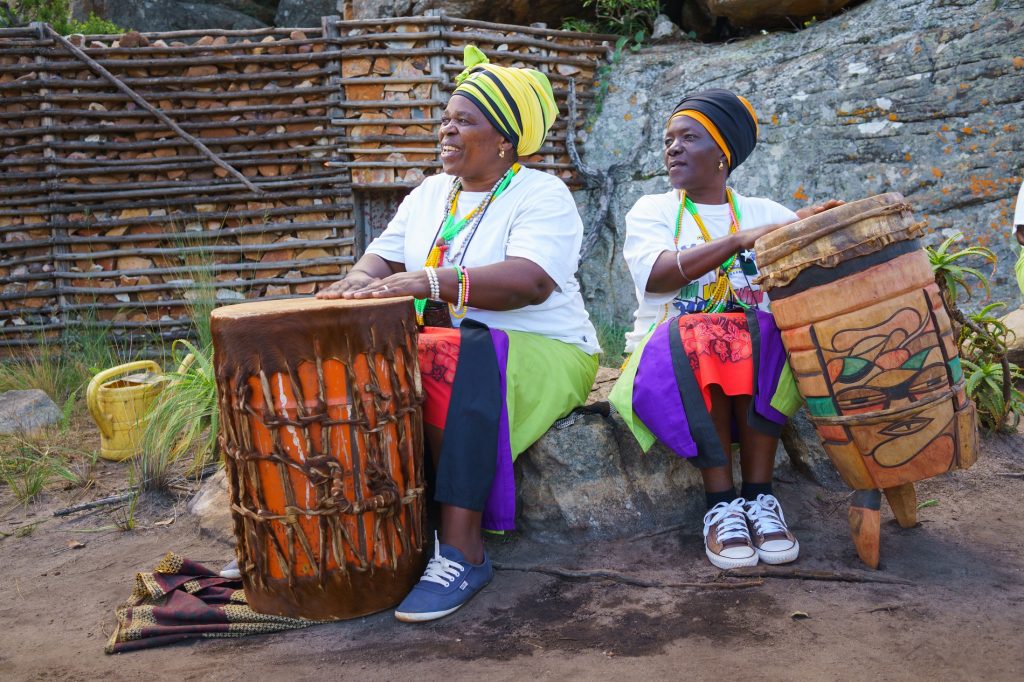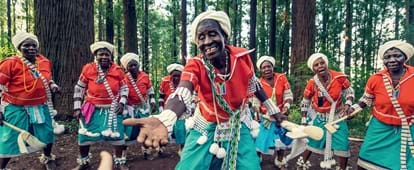Some Known Facts About South African Culture Today.
Table of ContentsSouth African Culture Today for BeginnersThe 9-Minute Rule for South African Culture TodayRumored Buzz on South African Culture TodayThe smart Trick of South African Culture Today That Nobody is DiscussingIndicators on South African Culture Today You Should KnowThe South African Culture Today Diaries
An issue of significance in Zambian villages is the passing away of enjoyed ones. All participants of the village put money, time and initiative with each other for the burial of the deceased.Songs and dance is an extremely vital facet of the Zambian culture. The numerous tribal units have their own dancing forms; nonetheless, makishi is typical among all people.
Not known Facts About South African Culture Today
When it concerns music, drums are used the most, with a variety of drumming events. In Zambia, bulk of the people are Christian; Protestant and Roman Catholic. There are small groups of Muslims and Hindus, with the remainder complying with regional native tribal ideas.

South African heritage and culture is exceptionally diverse, and is composed of several teams of individuals who each have their very own traditions and ideas. Having such a diversity of individuals and societies is what makes South Africa so distinct. In the real feeling of the expression, we are a rainbow nation.
Making it the 7th on the checklist of countries with the most Portuguese people in it outside of Portugal. Portuguese is not just a culture, however it is additionally a language and a nationality. Portuguese people stem from the nation of Portugal in Europe, nevertheless, due to Portugal (like several other countries in Europe) checking out the world and conquering various other countries during the 15th 20th centuries, South Africa has what we call Portuguese South African's living in it.
The Greatest Guide To South African Culture Today
Among the famous functions of the topography is a plateau that covers practically 2 thirds of the facility of the nation. The plateau complicated rises towards the southeast, where it culminates in the Drakensberg variety, part of an escarpment that separates the plateau from the coastal areas. The Drakensburg consists of Champagne Castle, the highest possible top in the country.
The area north of the Witwatersrand, called the bushveld, inclines downward from eastern to west towards the Limpopo River, which creates the global boundary. The western section of the plateau, the middleveld, likewise descends in the direction of the west and varies in elevation in between the highveld and bushveld. Between the Drakensburg and the eastern and southerly shoreline, the land descends to the sea.
Nearer the shore there is a low-lying plain called the eastern lowveld. Southwest of the plateau the nation becomes gradually a lot more arid, paving the way to the stony desert of the Great Karroo, approached the eastern by the lower, much better watered plateau of the Little Karroo. Dividing the completely dry southerly inside from the sandy coastal of the southern shore and West Cape is another variety, the Langeberg.
South African Culture Today Can Be Fun For Anyone
The nation's racially, ethnically, and politically divided history has actually generated nationwide and subnational icons that still operate as signs of the nation, and others symbols that are approved just by certain teams. The monoliths to white inhabitant occupation and political prominence, such as the Afrikaner Voortrekker ("leader") Monolith in Pretoria and the Rhodes Monolith honoring the British colonial realm builder and Cape prime minister Cecil Rhodes, continue to be sectarian icons.
The first modern-day inhabitants were the San ("bushman") hunter-gatherers and the Khoi ("Hottentot") individuals, that herded animals (South African culture today). The San might have existed for countless years and left evidence of their presence in hundreds of old cavern paintings ("rock art"). Bantu-speaking clans that were the ancestors of the Nguni (today's amaZulu, amaXhosa, amaSwazi, and vaTsonga individuals) and Tswana-Sotho language teams (today's Batswana and Southern and Northern Basotho) migrated below eastern Africa as early as the fifteenth century

The two previous republics of the Orange Free State and Transvaal (South African Republic) were established by Afrikaner settlers who defeated and dispossessed the Basotho and Batswana. Lesotho would have been by force incorporated into the Orange Free State without the expansion of British protection in 1869. The best marriage of the country arised from the South African Battle (18991902) in between the British and the two Afrikaner republics, which minimized the country to ruin at the beginning of the twentieth century.
Afrikaners traditionally link considered themselves the only real South Africans and, while giving complete citizenship to all homeowners of European descent, denied that standing to people her response of shade until the democratic shift of 1994. British South Africans retain a sense of cultural and social connection to Great Britain without compromising their identity as South Africans.
Some Known Incorrect Statements About South African Culture Today
The variety and fragmentation within ethnic collections and the balance of stress between those groups during the twentieth century prevented interethnic civil problem. While intergroup stress over resources, entitlements, and political supremacy stay, those disputes are as most likely to match Zulu versus Zulu as Zulu against Xhosa or African against Afrikaner.
From colonial India, British merchants and administrators brought the curved steel decorative roof coverings and slim lace work pillars that still epitomize the verandas of cottages arounds and cities throughout the country. Holy places contribute a crucial building element also in the tiniest communities. In addition to the skyrocketing steeples and traditional stonework of Afrikaans Dutch Reformed churches, Anglican churches, synagogues, mosques, and Hindu temples offer range to the spiritual architectural scene.

Butchering and the brewing of traditional cereal beer are important in safeguarding the involvement and a good reputation of the ancestors who are considered the guardians of excellent fortune, prosperity, and health. Indian communities preserve their indigenous culinary customs and use them on Islamic and Hindu ritual and ceremonial occasions. Afrikaners and Coloured people collect at weekend breaks and unique occasions at multifamily barbeques called braais, where neighborhood bonds are strengthened.
Since this was the main financial enterprise of both black Africans and white colonists, dispute in between those groups centered on the ownership of grazing land and animals. In 1867, the largest ruby deposits in the world were found at Kimberley in the west main location. The wealth from those areas aided fund the exploitation of the best gold coral reef on the planet, which was discovered on the Witwatersrand in 1886.
Getting The South African Culture Today To Work
This caused misconceptions and intentional misstatement in the negotiations of white settlers and government officials with African principals throughout the early american period (South African culture today). In the establishment of African reserves, some aspects of public and primarily "tribal trust fund" land tenure were protected, and even in white rural locations, kinds of public tenure were still exercised in locations with African areas
After the democratic improvement of 1994, programs for land restitution, redistribution, and reform explanation were instituted, yet progression has actually been sluggish. The white minority still controls eighty percent of the land. Following agricultural land intrusions in Zimbabwe, the Department of Land Matters has actually pledged to speed up land redistribution.